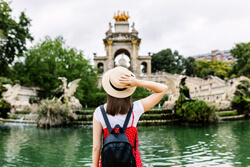With its unmistakable architecture, legendary cuisine, and thriving arts and culture community, Barcelona is a traveler’s dream. With a history dating back to Roman times, it is possible to admire Barcelona landmarks and buildings from all periods.
From Medieval gems to Modernist architecture, these are the most famous landmarks in Barcelona you don’t want to miss on your next visit to this phenomenal city.
Top Barcelona Landmarks
1. Sagrada Família
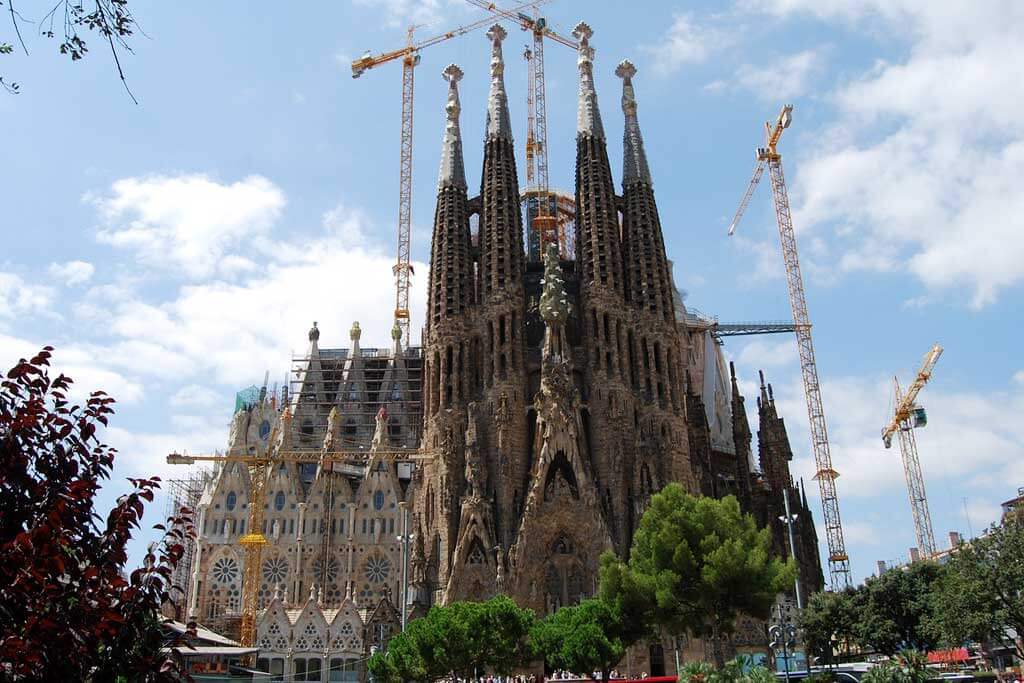
This atoning temple, La Sagrada Familia, is the epitome of Antoni Gaudí’s work and arguably the most famous landmark in Barcelona and Catalunya. It is almost in the center of the city, nestled in the Eixample neighborhood.
Often confused with the city’s Cathedral, La Sagrada Familia is an expiratory temple, which means it is only funded with donations from Christians who want to atone for their sins. The Sagrada Familia is the longest-running project in the world and has been under construction for more than 140 years!
Geometric shapes and colorful decorations characterize the temple, and Gaudí drew inspiration from nature to design his masterpiece. Iron, ceramics, and God’s lights are very present in the building.
To get the most out of this unique Barcelona landmark and skip the longest lines, we recommend taking a guided tour with skip-the-line tickets. La Sagrada Família is open from Monday to Saturday, from 9 a.m. to 6 p.m., and 10:30 a.m. on Sundays. In March and October, it stays open until 7 p.m., and from April to September, it stays open until 8 p.m. – Click here to see all the ticket options for La Sagrada Familia
2. La Rambla
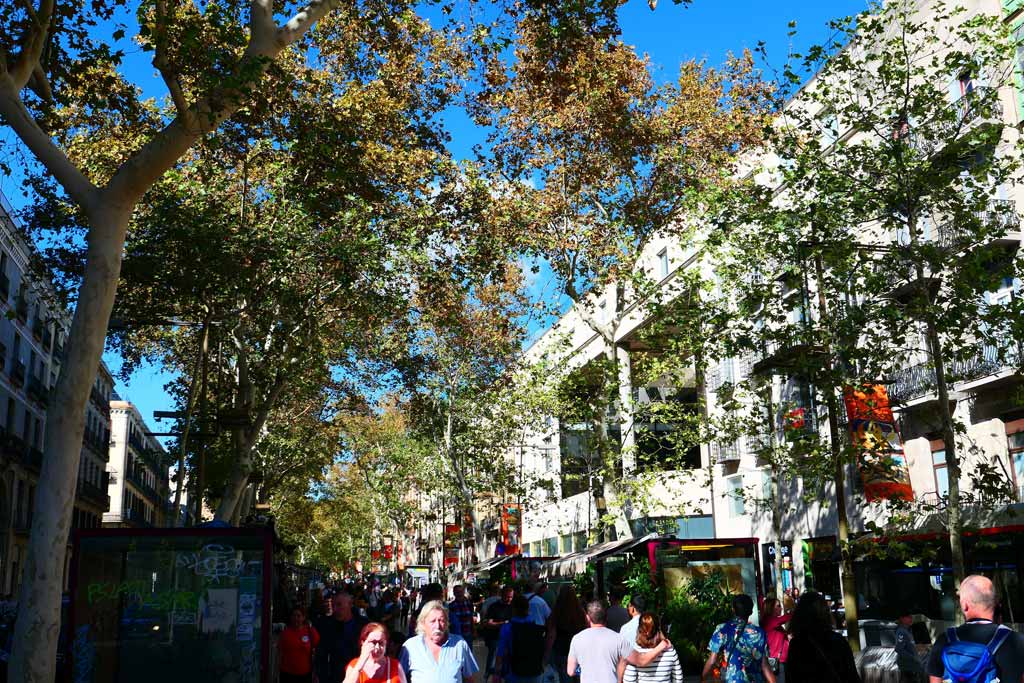
La Rambla is one of Barcelona’s most prolific tourist areas, a 1.2km pedestrian stretch that runs from Plaça Catalunya to the Barceloneta neighborhood and the sea, between the Gothic Quarter to the east and the El Raval to the west.
La Rambla is the beating heart of the city’s Old Town (Ciutat Vella district); here, you will feel the pulse of Barcelona as tourists and locals mill among the shops and restaurants.
This large and picturesque corridor is filled with vendors and artists and flanked by historic buildings, including the Palace of the Virreina, the Plaça Reial, and the Liceu Opera Theatre. The street’s construction dates back to the late 1300s and has undergone many transformations to reach its current incarnation.
GOOD TO KNOW: La Rambla or Las Ramblas? Although many people, including locals, call it Las Ramblas, there’s only one promenade, so it is La Rambla. However, La Rambla is divided into different sections (Rambla dels Caputxins, Rambla de les Flors, etc.), hence the confusion.
3. Mercat de La Boqueria (Boqueria Market)
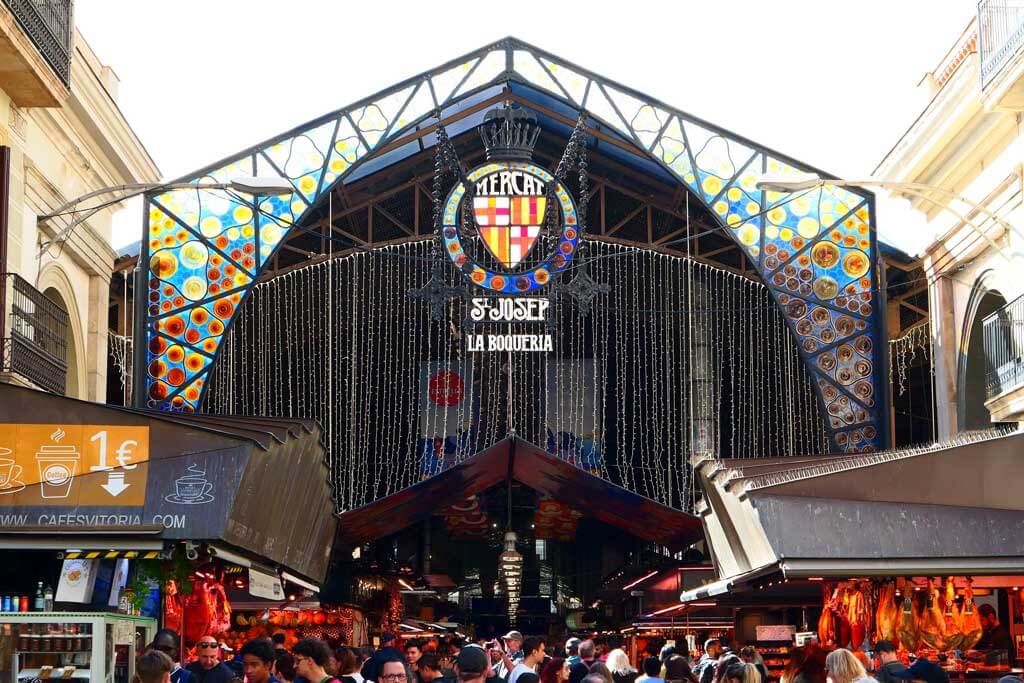
Barcelona’s gastronomic sphere shines bright in this bustling Market. Fill your bags with fresh produce or simply eat your way through all the indulgent offerings at Boqueria Market on the southern end of La Rambla and part of El Raval neighborhood.
The Market has been an integral part of Barcelona’s food scene for more than 180 years, and today, you can peruse through over 300 stalls. The Market has come a long way since its 1836 roots but has kept its warm atmosphere and quality selection throughout the years.
The Boqueria Market is open from Monday to Saturday, 8:00 to 20:30.
4. Font de Canaletes (Canaletes Fountain)
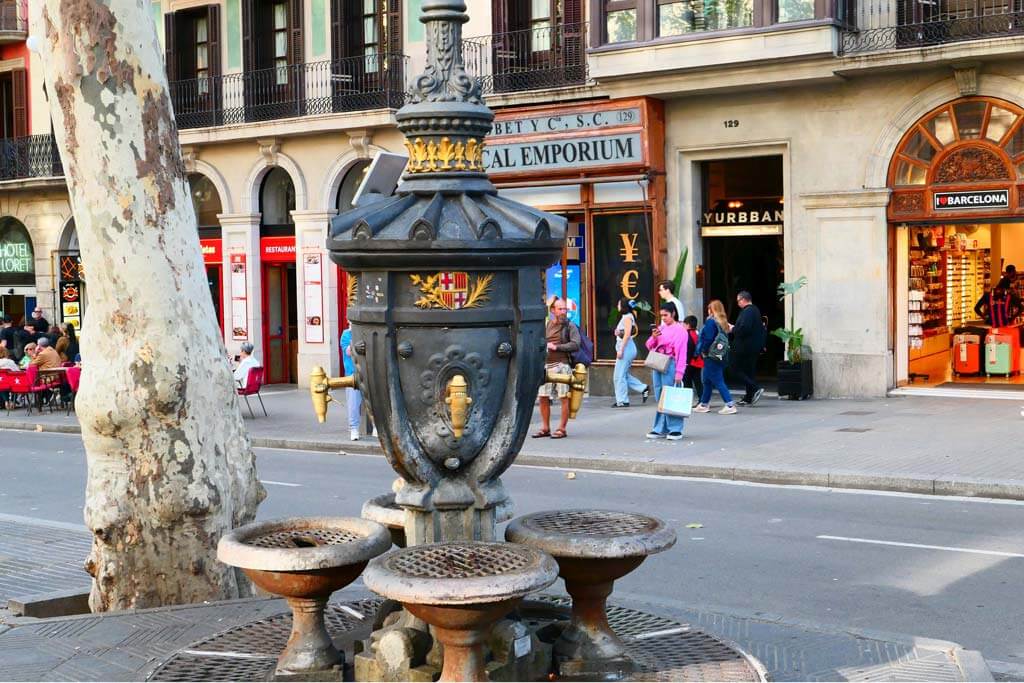
This public fountain at the beginning of La Rambla has a special place in the heart of the Catalans. It is here where supporters celebrate Barça’s national and international titles!
The Canaletes Fountain has no special features or size; it’s just like the other public fountains nearby. In the thirties of the last century, the headquarters of the sports newspaper “La Rambla” was located right in front of the Canaletes Fountain. The only way football fans could find out the results of the day was to get up to this point and have the journalists communicate it to them using blackboards. This means that many fans found out about the victories “on the spot,” hence the celebrations at the touch of Canaletes.
Also, a local legend says whoever drinks water from the Canaletes Fountain will return to Barcelona. You can try!
5. Catedral de Barcelona (Barcelona’s Cathedral)
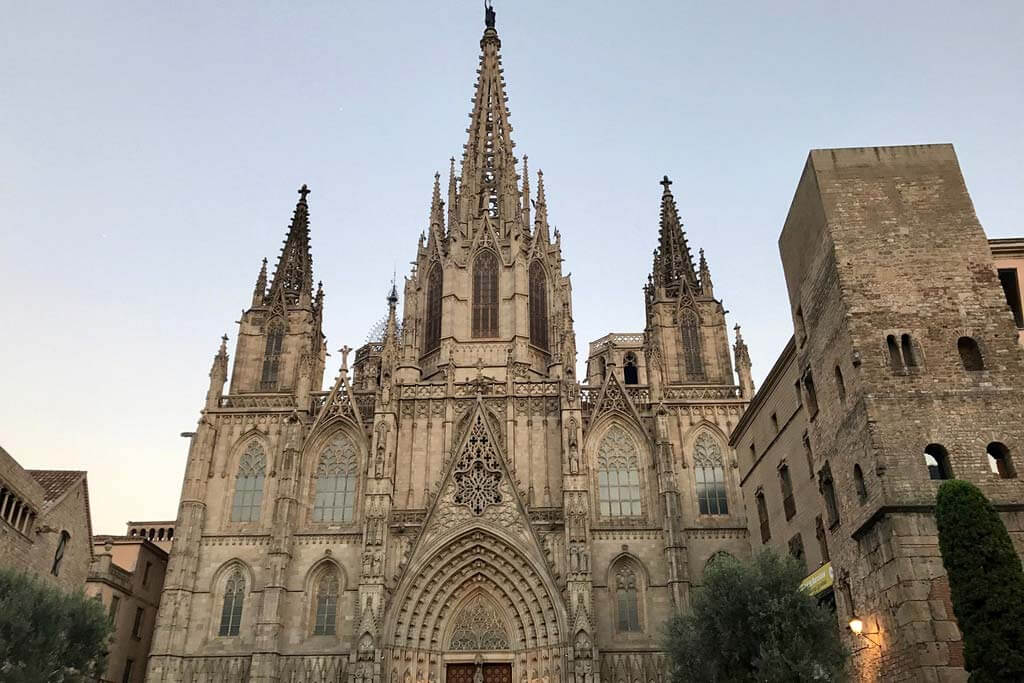
In the heart of Barcelona’s Gothic Quarter stands a Catholic icon, the Barcelona Cathedral. It is built in Gothic style, and its imposing presence invites you into the Medieval area of the city where time has had little effect on Gothic architecture.
One of the oldest landmarks in Barcelona, the Cathedral remains the seat of the Archbishop of Barcelona, and it was completed in 1420 (except for the main façade, which was finished in 1802 in Neo-Gothic style). Inside, your eyes are drawn up to the vaulted ceilings and stained glass windows that project colorful rays of light into the otherwise haunting interior.
TIP: Look up! Walk around the Cathedral and look up: a unique world of gargoyles and bizarre creatures will appear to you!
There are opening hours for worship and prayer and different hours for cultural and tourism visits. Tourists can visit the Barcelona Cathedral from Monday to Friday, 10:30 a.m. to 6:30 p.m., and until 5 p.m. on Saturdays.
Don’t miss the Cathedral’s intimate cloister, also in Gothic style, with a separate entrance in Carrer del Bisbe.
6. Passeig de Gràcia
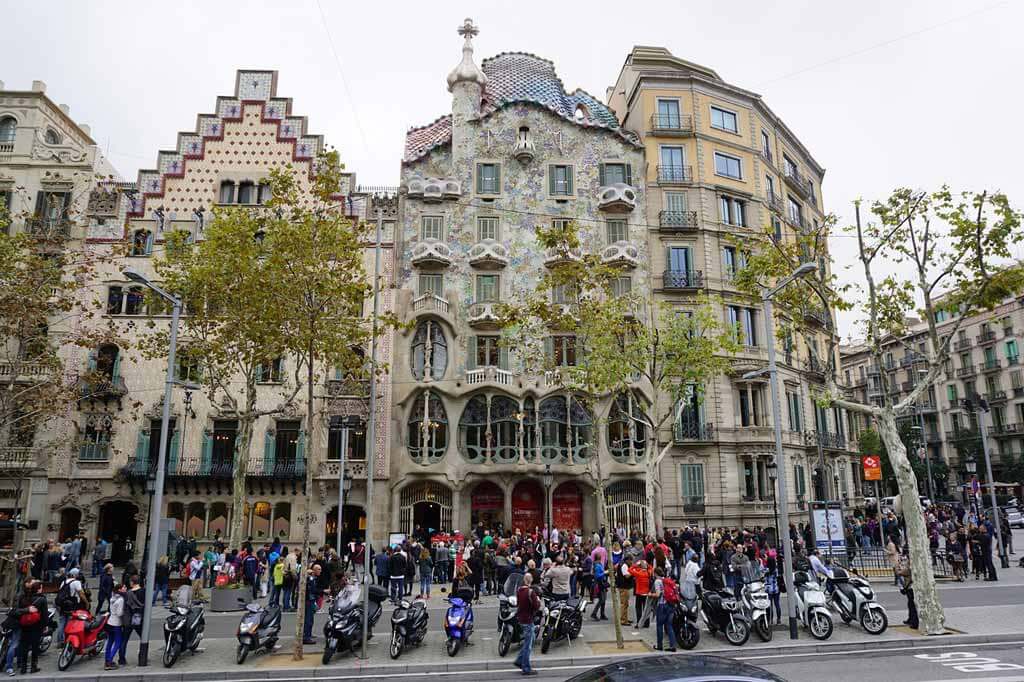
Nowhere else in the world do luxury shopping and architectural heritage combine quite as effortlessly as in Passeig de Gràcia. It runs for almost 2 kilometers from the elegant gardens of the Jardins de Salvador Espriu down to Plaça de Catalunya through the Eixample district.
Often compared to the world-famous Champs Elysées in Paris, this street has it all, from Gaudi to Gucci. Prominent Modernist architects like Pere Falqués, Gaudi, and Lluís Domènech i Montaner left their mark on the buildings that were once a playground for aristocrats. The most famous luxury brands in the world all have locations in Passeig de Gràcia, making it one of the most desirable shopping destinations in Europe.
7. La Pedrera – Casa Milà
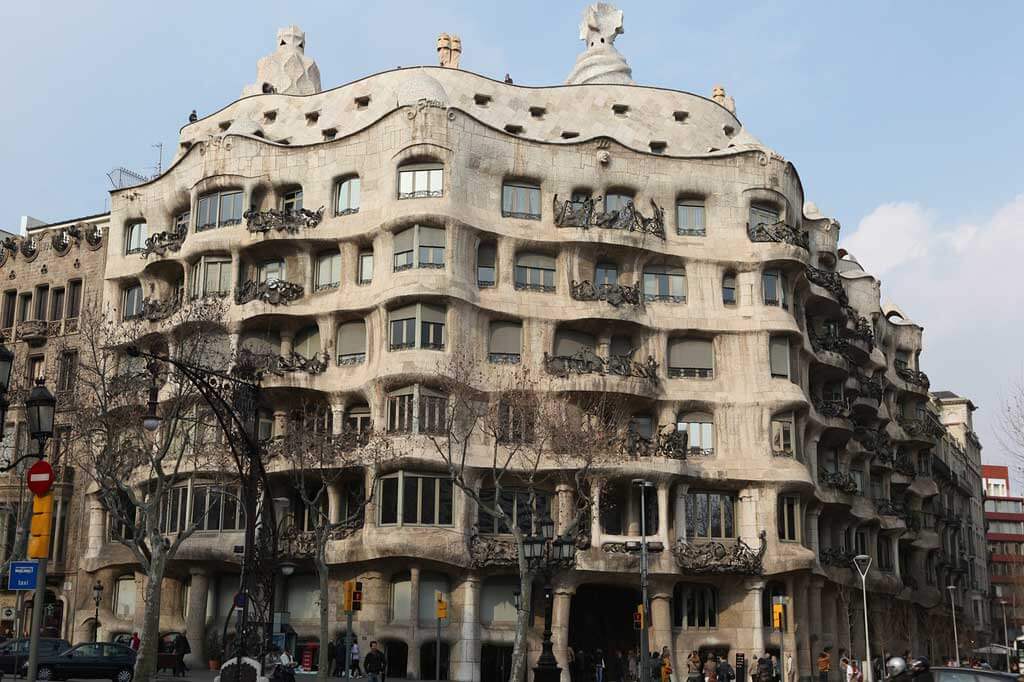
The Casa Milà (its official name) is another of Antoni Gaudí’s most notable works in Barcelona. It is an unmissable Barcelona landmark on Passeig de Gràcia, one of the city’s prominent shopping streets. Hop off at the Diagonal metro stop, and you will almost immediately spot the unconventional icon.
Its nickname “pedrera” means “quarry” in English, given by the locals to make fun of the building’s particular façade design. It was the last civic structure that Gaudí would design, and today, this remarkable space is used for tourism, cultural exhibits, commercial purposes, and a select few residential spaces.
La Pedrera was completed in 1912 and was designed as a constant curve. Every angle has a purpose, but it is also a complete sculpture. Don’t miss the museum dedicated to Antoni Gaudi in the attic of the building and a visit to the roof with its unique chimneys: the design will probably remind you of the famous stormtroopers or even Darth Vader!
Visit La Pedrera (skip-the-line ticket with audio guide) from Monday to Sunday, 9 a.m. to 6:30 p.m., or take its fabulous Night Experience between 7 p.m. and 10 p.m.
8. Basilica of Santa Maria del Mar
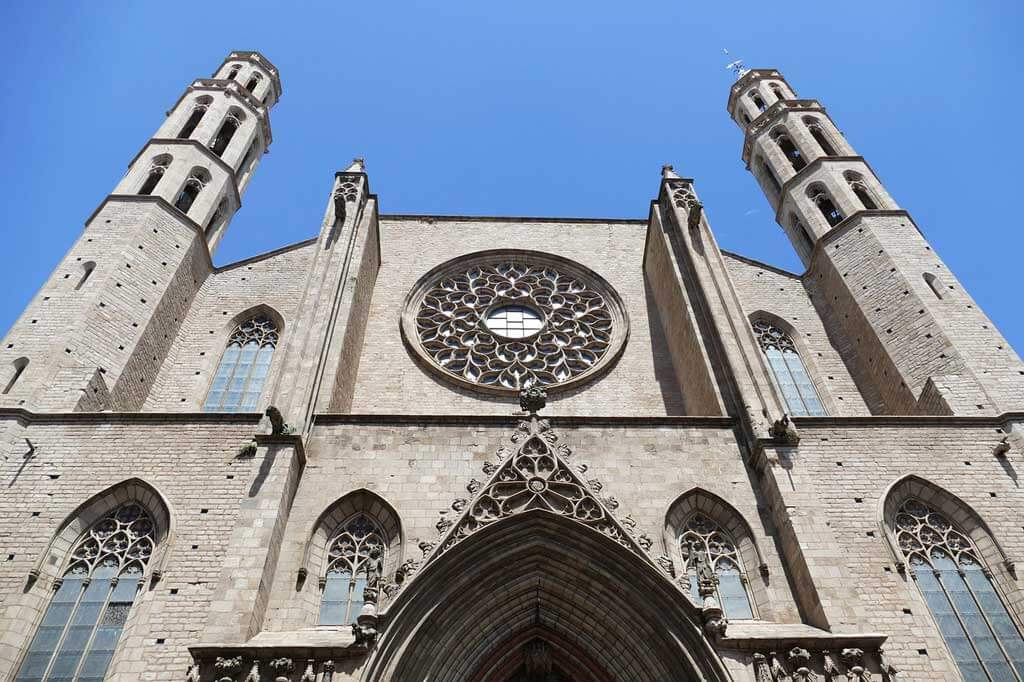
In the neighborhood of La Ribera, in the Ciutat Vella district, you will find another of the historical landmarks in Barcelona worth visiting. The Basilica of Santa Maria del Mar is a uniquely simplistic structure, capturing the 14th-century Catalan Gothic style where the interior vastly overshadows the exterior.
In Medieval times, this neighborhood was inhabited by shipowners, merchants, and port unloaders (the bastaixos), who funded the construction of the religious building, dedicating it to the Virgin Mary, the protector of the sea. You can still see two bastaixos carrying the stones for the building decorating the Basilica’s imposing doors.
This remarkable building was constructed in only 50 years, which translates into a pure and uniform structure without mixing architectural styles. Unlike most churches from its time, this Basilica does not have transepts or a structure between the nave and presbytery, giving it an illusion of grandeur. The vaulted ceiling is lit up by the tall clerestory windows and the rose window streams in beams of light.
Cultural visits to the Basilica of Santa Maria del Mar are possible from Monday to Saturday, between 10 a.m. and 6 p.m., and on Sundays, from 1:30 p.m. to 5 p.m.
TIP: This guided tour of the Basilica interiors gives you access to the roofs for amazing 360-degree views of Barcelona!
9. Palau de la Música Catalana
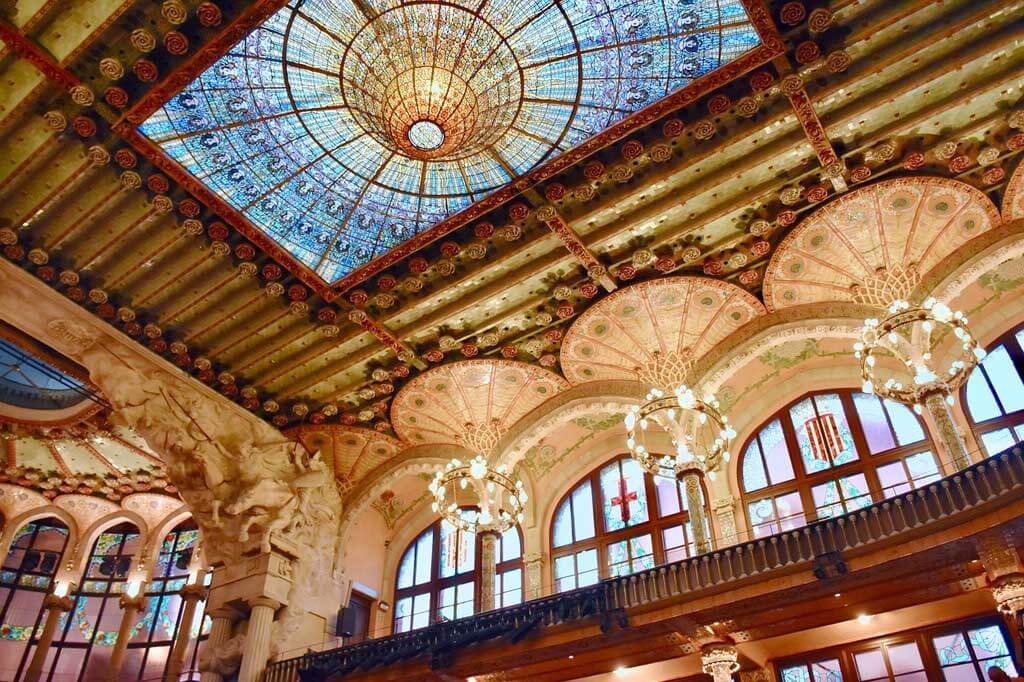
Music is another of the captivating elements that makes Barcelona such a special destination. Palau de la Música Catalana, or the Palace of Catalan Music, is a haven for performance art and sits on Via Laietana close to other landmarks like the Barcelona Cathedral and the Basilica de Santa Maria del Mar.
The theater hosts dozens of shows a year, but the architecture of the building is an experience in itself. The delicate mosaic work, elaborate stained glass ceiling, chandeliers, and abundance of sculptures are all marks of renowned Modernist architect Lluís Domènech i Montaner.
His masterpiece was completed in 1908 and has been inducted as a UNESCO World Heritage Site as it is a landmark for Catalan culture.
There are shows throughout the week, but self-guided and guided tours are also available.
10. Museu Nacional d’Art de Catalunya /Font Màgica
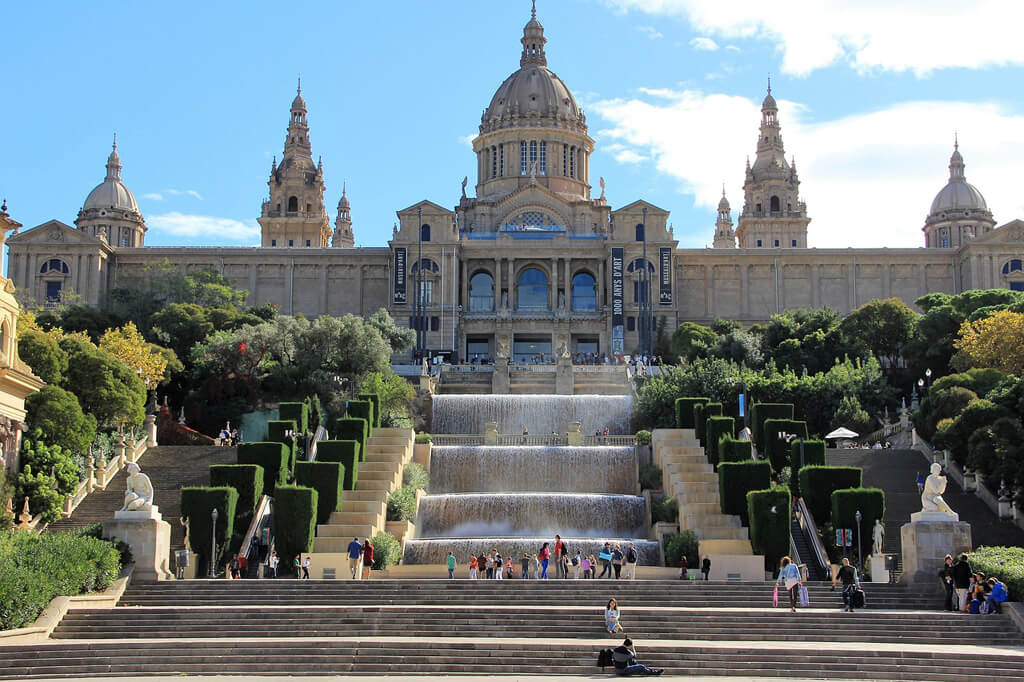
From its hilltop perch on Montjuïch, the National Museum of Catalonian Art enjoys the most pristine views of Barcelona. The Museum is housed inside the Palau Nacional, a dramatic neo-Baroque palace surrounded by lush gardens.
Here, you can admire more than 250,000 works of art, capturing centuries of Catalan history. The museum also boasts the world’s largest collection of Roman frescoes (spoiler: they are pure wonder!), structural pieces saved from Romanesque churches in the Pyrenees.
The Museum is open all year, but closing times depend on the season. You can visit from Tuesday to Saturday, 10 a.m. to 6 p.m., with extended hours until 8 p.m. from May to September. On Sundays, the museum closes at 3 p.m. – Click here to buy your tickets to the Museum
Located below the National Museum, the Magic Fountain is Barcelona’s largest fountain and one of its most popular attractions. At night, the fountain displays incredible water, light, and music shows with spectacular choreographies – Click here for the show times
11. Columbus Monument
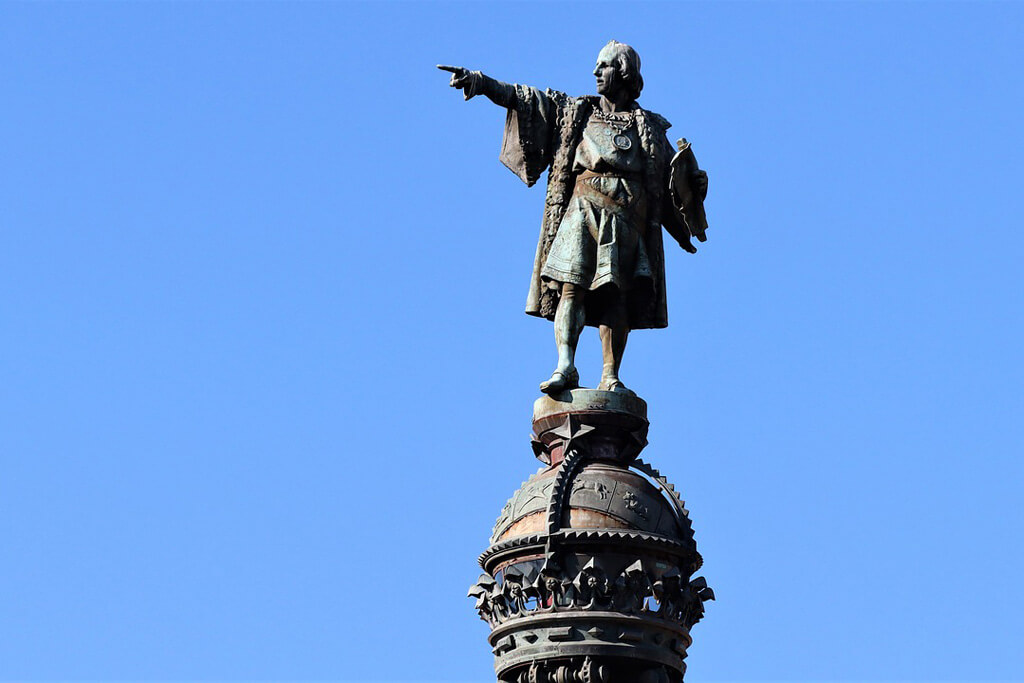
At the lower end of La Rambla is Barcelona’s most recognizable monument, the Columbus Monument. This 60m tall structure is one of the famous Barcelona landmarks and an icon of the city and was constructed to honor Christopher Columbus’s first voyage to the Americas.
The monument was designed by Gaietà Buigas i Monravà and was finally completed in 1888. It comprises a 7m tall statue of Columbus, a 40m tall Corinthian column, and a pedestal and plinth, each decorated with several statues, bas-reliefs, and buttresses.
Inside the column is a hidden secret: a small lift takes you up to the foot of the statue, where you can enter a 360-degree observation deck.
The Columbus Monument is always visible from the outside, but the lift and viewing platform are only open from 8:30 a.m. to 2:30 p.m. – Click here to buy your tickets to the observation deck
And there you have it, the most famous landmarks in Barcelona for a first trip. Which Barcelona landmarks would you like to visit right now?

